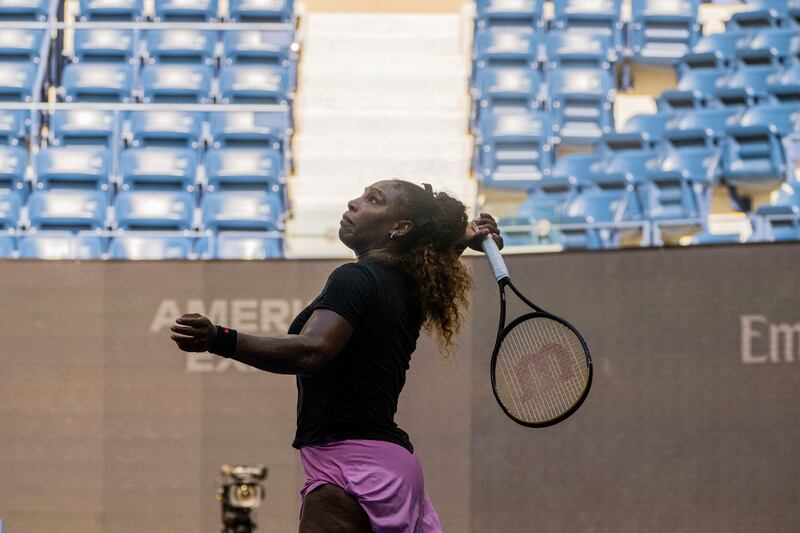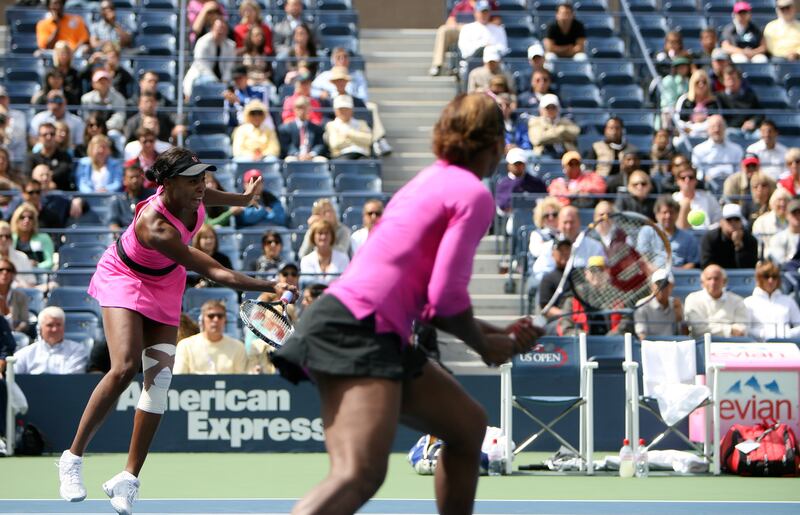Serena Williams did not invent a tennis shot, although she certainly came close to perfecting one with her serve.
She was not, in the absolute sense, a pioneer for elite black tennis players. Althea Gibson and Arthur Ashe were the first black players to face down the barriers to entry and succeed at the highest level, followed by champions including Zina Garrison and Yannick Noah. But there is no doubt, with Williams about to play in her farewell US Open just before turning 41, that she changed the game she long dominated — the game she has learned, over time, to treasure.
Her legacy, which is in many respects shared with her older sister and soul mate, Venus Williams, is evident in the powerful, aggressive style that has become the norm, if not quite the rule, on tour. See the full-cut, all-action, rip-the-return approach of number one Iga Swiatek and Elena Rybakina, the new Wimbledon champion.
“One of the greatest impacts Serena had is she definitely took the game to a different level,” said Mary Joe Fernandez, an ESPN analyst and former WTA star whose playing career overlapped with those of the Williams sisters. “Serena changed it in different ways, whether physically, mentally or movement-wise. It just got better, and it got better because of Serena and also Venus.”
Cognizant Classic lowdown: The purse, the field, the course as Shane Lowry and Séamus Power tee off on PGA Tour
Ireland’s limitations laid bare in Slovenia as poor Nations League start continues
Le Bombe Equipe and the French 7-1 split promises Ireland a battle of collisions
Owen Doyle: Ireland were major beneficiaries of the new 20-minute red card against Wales

The legacy is also there in the presence of talented young black women’s stars such as Coco Gauff and Naomi Osaka and in the increasing number of black junior players, who, along with their families, have used the Williams sisters as a template. Another indicator: 10 of the top 30 Americans in this week’s WTA singles rankings are black or biracial (and none of those 10 is a Williams sister at this stage).
“I think everything started with Venus and Serena,” said Martin Blackman, general manager of player development at the US Tennis Association. “There’s no doubt about the power and the impact of that demonstration effect. I think it was even more powerful because they grew up in Compton [in Los Angeles], and no matter where you live, you know that Compton is a tough place to grow up. And what their parents, Richard and Oracene, did to get them what they needed to become champions is just an unbelievable American success story.”
That story, as Blackman points out, has resonated not just with African American families. It has much broader reach.
“It could be Latino, Asian or Caucasian — it doesn’t matter. It transcends all races,” said Nick Saviano, a veteran American coach who owns an academy in Florida and has worked with leading pro players such as Sloane Stephens, Amanda Anisimova, Eugenie Bouchard and Gauff.
“I see the Williamses’ impact every day,” Saviano said. “If I go to a 10-and-under tournament, I see it. I see more people from different ethnic backgrounds. I see people daring to dream big.”
The great women’s players who preceded the sisters had plenty of strengths. Chris Evert was a paragon of cool and consistency. Martina Navratilova set new standards for fitness and attacking prowess, relishing life at the net. Steffi Graf had speed and explosive power off her unconventional, often-airborne forehand, and her crisply chipped backhand was devilish in a different way: skidding low and proving difficult to attack.

Fernandez, a three-time Grand Slam singles finalist once ranked as high as number four, said the Williamses’ emergence contributed to her decision to retire in 2000.
“I caught Serena and Venus at the end of my career, but they’re one of the reasons I was like, ‘Okay, the game has evolved now, and I can’t keep up’,” she said. “It was such a struggle to be able to withstand it. I couldn’t match it, so I just knew this was now a different level, a different stage in the sport. Game-wise, I think they both improved as years went by, both became better players and became students of the game, but it was just that dominant power, court coverage and intensity.”
Justine Henin, a Belgian star with the gorgeous one-handed backhand who was one of Serena’s early and fiercest rivals, said the intimidation was real.
“We can talk all we want about her tennis qualities, but one of her strengths was to show that she was convinced that she was going to walk right over you even though normally she should have been full of doubts like all players,” Henin said of Serena in a recent interview with French publication L’Équipe. “That generated all kinds of fears for her opponents. I was afraid for a long time.”
Although Serena has announced that the end is near, she still is not prepared to state plainly that the US Open is her last tournament, even as she prepares to face Danka Kovinic, an unseeded Montenegrin, in the first round Monday night.
“I don’t know, I think so, but who knows?” she said on Thursday during a public appearance hosted by a Manhattan hotel.
The Australian Open, the next Grand Slam tournament on the calendar, starts in January. Could she be there?
“I don’t think so,” she said. “You never know. I’ve learned in my career: never say never.”

There is a message in her resistance to goodbye, as well. She has played far longer than even she expected or her father predicted. In doing so, in coming back from childbirth at age 36 to play several more seasons, she has reminded the younger generation to follow their own timelines, much as Navratilova did before her and as her 41-year-old contemporary Roger Federer has done in the game that he also is clearly loath to leave.
“I think one of the best things Serena has given to this sport is her longevity and still wanting to be great,” Stubbs said.
That is part of her legacy, too.
— The New York Times
2022 The New York Times Company















